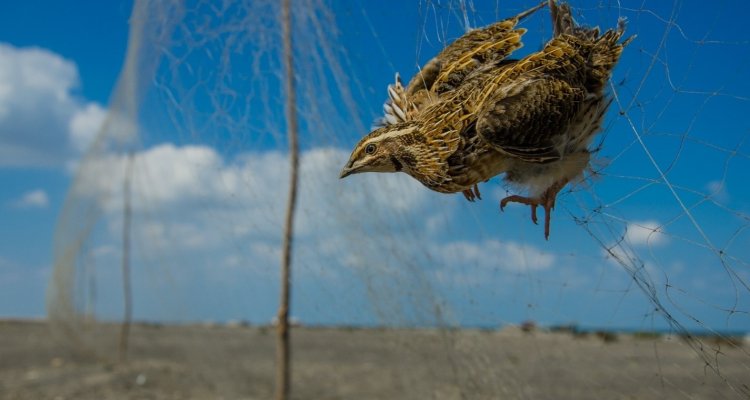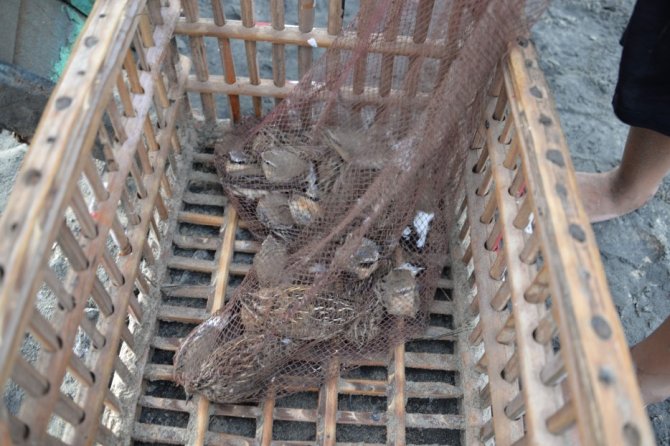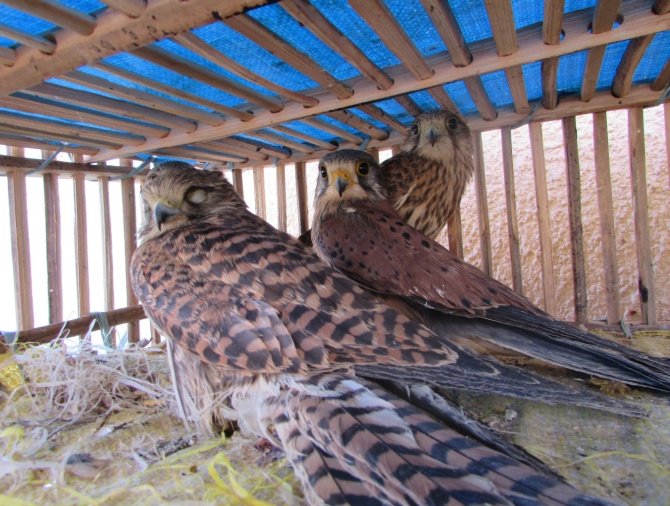
News
How Dutch migratory birds are caught by trapping nets
Each year, large numbers of migratory birds (including Dutch birds) are caught in the Mediterranean. These birds, ranging from quails to nightingales, become entangled in a wall of nets along the Mediterranean coastline. The birds often fly low over the Mediterranean Sea only to land directly in the trapping nets. Concerns are now mounting and specifically Egypt increases the efforts to end this unfortunate situation. Research should shed more light on the factors that play a role in bird trapping and on the potential solutions.
Bird trapping is a source of income and a source of food for many people in Egypt. Researcher and PhD candidate Khaled Elnoby is investigating Egyptian bird trapping alongside development economist Erwin Bulte, behavioural ecologist Marc Naguib and several other colleagues. “Birds are an important source of protein and always have been. The ancient Egyptians used to trap birds for food. The difference is that today's generation is trapping birds in huge numbers using modern technology like bird calls and glue sticks. This results in mass trapping – much more than can be justified for food purposes. It's a source of income.”
The trapping and killing of birds is not restricted to Egypt alone -- it’s happening throughout the Mediterranean. However, Egypt does play a prominent role due to its growing population and geographic location and is also most active in finding solutions. “Egypt has a population of more than 100 million and borders three continents: Asia, Europe and Africa,” explains Elnoby. “Due to its geographic location, millions of migratory birds pass over the country from Asia and Europe.”
Is this a problem for Dutch nesting birds?
Henk van der Jeugd, Head of the NIOO-KNAW’s Centre for Avian Migration and Demography, is an external advisor for the project. “Most Dutch nesting birds take a western route to Africa, via Spain or Italy,” he explains. “Most of the nesting birds in Egypt come from Eastern Europe and Western Asia, but there are some species that breed in the Netherlands and take the eastern route via Egypt. These include the red-backed shrike, the marsh warbler, the icterine warbler and the lesser whitethroat. These species have a good chance of ending up in the Egyptian bird nets, although exact figures are hard to estimate.”

Why is bird trapping a problem?
Bird trapping in general is not illegal and is based on a permit system. However, not all aspects of trapping are legal. Some poachers regularly use illegal trapping methods to lure or capture birds. Most birds are caught by poor people, partly for consumption but mainly for income by selling them on to traders. The traders give them a net, instructions and sometimes access to trapping sites. The traders buy the birds from these trappers and then deduct the cost of the nets afterwards. This has led to the creation of an entire value chain around bird trapping.
According to Elnoby, bird trapping is incredibly complex. “Bird conservation is challenging in a country like Egypt, where there are cultural aspects to take into account as well. What's legal and what's illegal? Bird trappers don't think about endangered species. In the past, trappers were only active in autumn, not in spring, which allowed migratory birds to reach their nesting spots. Now they trap all year round.”
There is also a political element to it, which is partly based on the notion that Egypt doesn't care about birds. A few years ago, this accusation was mainly put forth by Germany. These days it's seen as a Mediterranean problem. “We can be quick to point fingers in the Netherlands and Europe,” says Van der Jeugd. “There's a whole world and a whole economy behind it. Fishing is decreasing and people have to eat something. This form of bird trapping is a legal livelihood. And it's not just happening in Egypt. Migratory birds are being caught and shot in huge numbers along the coast of Libya and in Malta, Italy, France and Spain as well. In these countries, bird trapping isn't a source of income, it's deeply embedded in the culture. There, the fight is a lengthy one that calls for continuous lobbying.”
According to Van der Jeugd, migratory birds are having a particularly hard time in recent years, with many species declining in number. This is party due to climate change but also because permanent stopping places along the migration route are starting to disappear due to advancing agriculture and industry. Birds are struggling to find food in our increasingly rationalised agrarian landscapes. In Africa, drought also plays a major role. In other words, trapping isn’t the only cause, although this certainly is a threat to migratory birds. The population of European turtle doves, for example, has almost been hunted to extinction. Trapping is like the final blow for this species, but it's not happening along the Egyptian route.”

What is being researched?
From 2015 to 2017, Nature Conservation Egypt conducted field research at various points along the coast. These points were visited regularly to document trapping activities, such as the number of birds and bird species. “We also went to markets to see what was being sold there,” explains Elnoby. “This was a first and gave an indication of the quantity.”
The exact number of birds is hard to pinpoint, but annual estimates range from 800,000 to 1 million to 5 million in the entire Mediterranean region. Khaled Alnoby stresses that these figures are very rough estimates and largely involve quails, but also turtle doves, falcons, orioles and chiffchaffs. One thing that has become very clear during the research study is the impact of bird-calling devices. “This has increased bird trapping by 60%,” says Elnoby. “But it’s extremely difficult to remove this tool from the scene because it's not something you can ban. It's usually a simple phone app. There’s not a lot the police can do.”
In short, this problem is highly complex. “At the moment, we're taking a scientific approach in the hopes of identifying the scale of the problem,” says Elnoby. “We want to learn more about mass trapping and how the market is structured. For example, what does the value chain look like and how many trade levels are involved? Exact figures are hard to come by as there's no authority that keeps track of it. Bird trapping is partly legal, but the number of permits does not paint a realistic picture.”
Van der Jeugd supervises a team of volunteers who ring birds in order to track them. “If it weren't for the pandemic, I would have liked to send this group to Egypt. My long-term goal is to get some of the bird trappers in Europe to participate in our bird study and to help us ‘ring’ them. In some places, this may help initiate a gradual shift from trapping to a form of tourism that would give birdwatchers the opportunity to admire thousands of migratory birds on a kind of bird safari. Bird migration is beautiful and extremely attractive for tourists, especially there, where you can see them up close.” Van der Jeugd admits that this plan is a distant dream.

So what can we do?
“We’ll never eradicate bird trapping entirely, but we can make the process more sustainable,” says Erwin Bulte, a development economist at Wageningen University & Research. “This calls for changes in the value chains. One option is to limit illegal trapping as much as possible. We can also come up with new solutions to help trappers living in poverty. To address the problem properly, we have to tackle the issue of poverty in general, because trapping is a form of livelihood for many people. This may mean working with traders to develop more sustainable trading methods.” According to the researchers, this is easier said than done.
Elnoby knows from experience that most people are willing to cooperate if their basic needs are met. “Many bird trappers are also fishermen. To them, a school of fish is the same as a flock of birds. It’s all about the mindset. If you can explain the problem to them respectfully, they’ll be more willing to change their ways. I spoke to a bird trapper who had no idea that some birds were endangered. He said that if he had photos of these endangered species, he could release them again.”
Cultural issues can be difficult to understand. Many people believe there will always be plenty of fish in the sea and plenty of birds in the sky. “Many trappers don’t know about migration patterns and endangered species,” says Elnoby. “Good communication and dialogue help raising awareness. This is important, as is developing new alternatives. Understanding the market can help us make important changes. Poor trappers are borrowing money from major traders and paying back their debt by trapping birds. A different financial system could easily solve this problem. If we take care of the people, the people will take care of the birds. Their own survival is more important than nature conservation.”